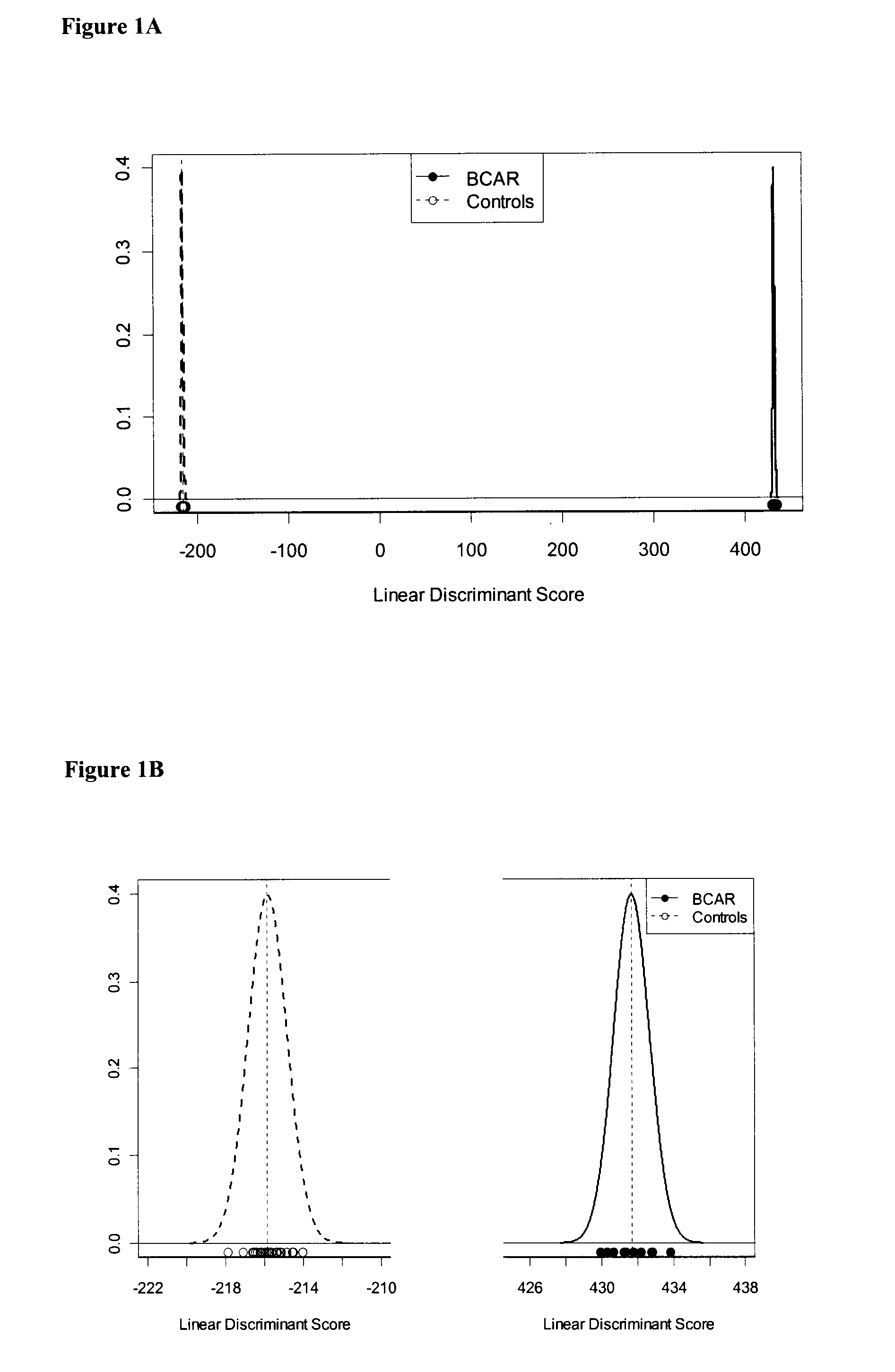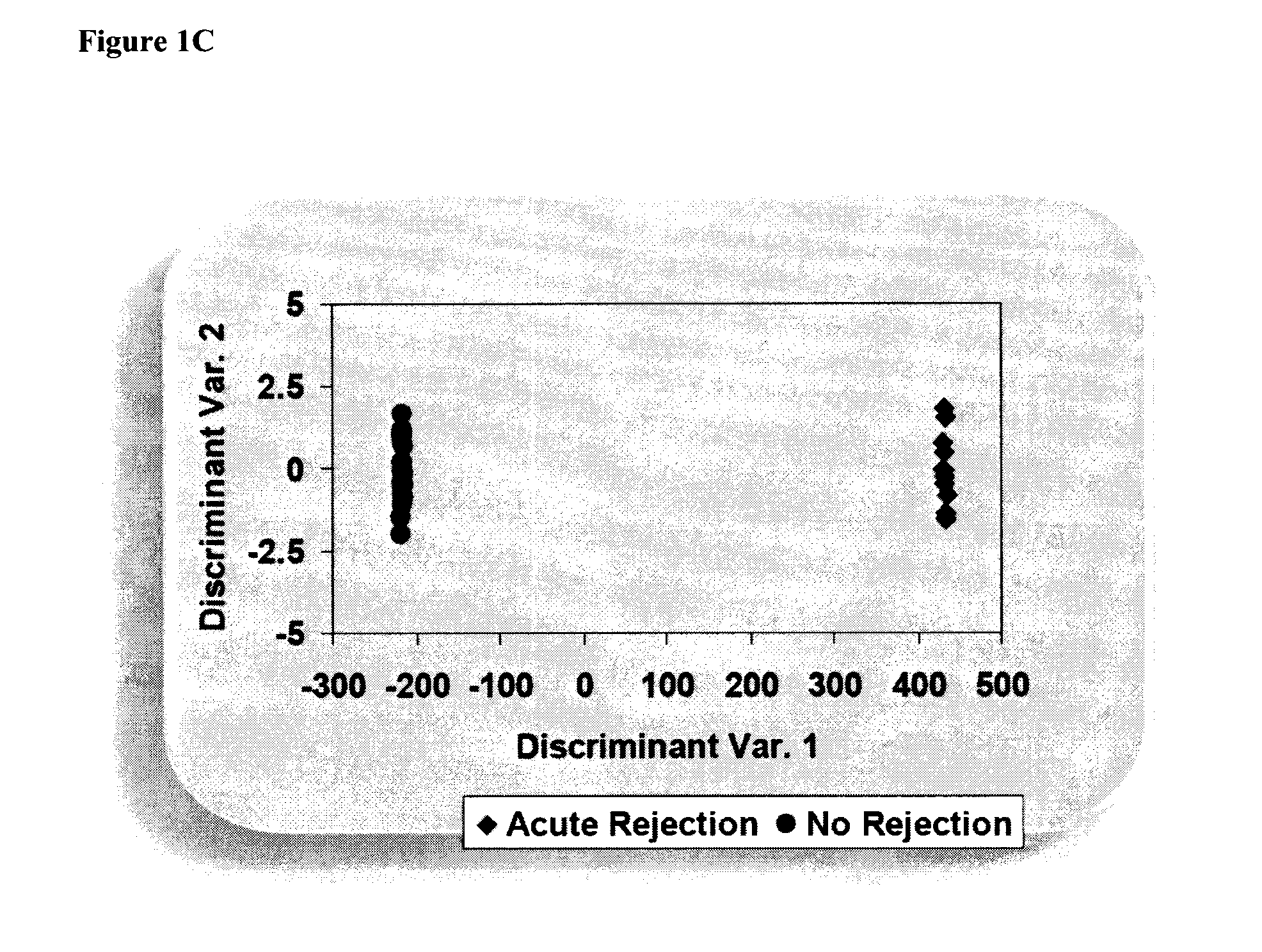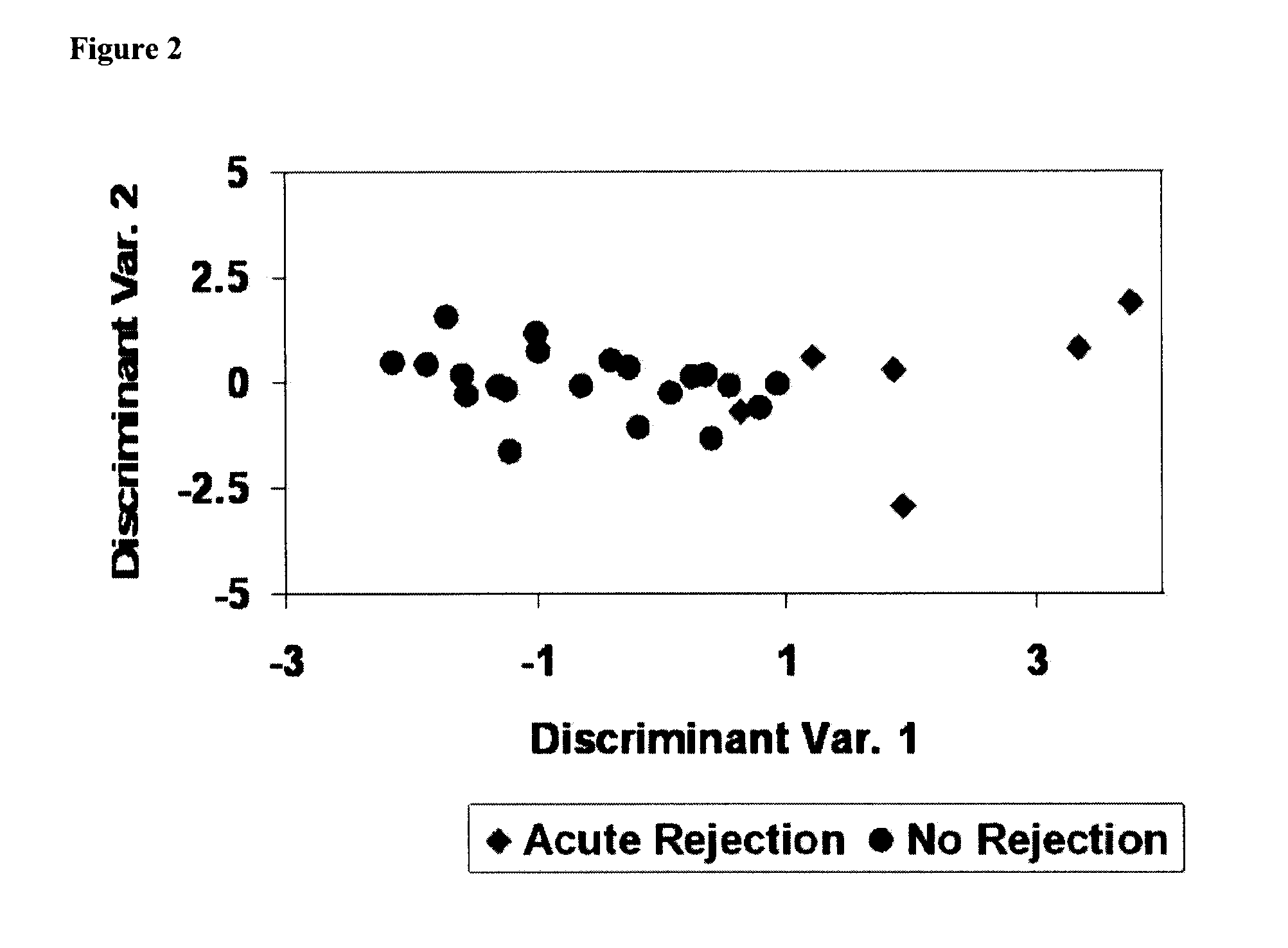Methods of Diagnosing Rejection of a Kidney Allograft Using Genomic or Proteomic Expression Profiling
a technology of allograft and genomic expression, applied in the field of kidney allograft rejection diagnosis using genomic expression profiling or proteomic expression profiling, can solve the problems of increasing blood creatinine levels, reproducibility and interpretation of biopsy results, and nephropathy and kidney failure, so as to reduce sampling errors
- Summary
- Abstract
- Description
- Claims
- Application Information
AI Technical Summary
Benefits of technology
Problems solved by technology
Method used
Image
Examples
example 1
Comparison of Biomarkers with Clinical Diagnosis
[0255]A total of 33 subjects were included in the study, comprising 11 patients with an acute rejection within the first week of transplantation, and 22 patients who were free of rejection for at least 6 months following transplantation. The 33 transplanted patients were clinically stable 3 months following renal transplantation. A total of 183 probe sets representing 160 genes were found to be statistically significantly and consistently differentially expressed between AR and NR subjects (Table 2). The sequences that the probe sets represent are presented in FIG. 10. Samples from subjects with acute rejection within the first week after transplantation clustered together, separately from samples from non-rejection patients.
[0256]Classifying the test subjects using the panel of nucleic acid markers listed in Table 5 divided the subjects into rejectors (AR) or non-rejectors (NR) (FIG. 1A-C).
[0257]As a comparison, an independent classif...
example 2
[0258]Subjects: Of the 305 subjects who received a renal transplant during the period of observation, 27 (8.9%) developed BCAR with a Banff grade of ≧1 a during the first 3 months post-transplant, while a further 24 (7.9%) had only borderline changes. A total of 11 / 27 (40.74%) subjects with grade ≧1a rejection on biopsy (range: 3-10 days, mean: 6 days) fulfilled the case selection criteria with immediate graft function, and absence of infection or other confounding co-morbid events, as did 5 / 24 (20.83%) subjects with borderline changes on biopsy (range: 5-7 days, mean: 6 days). A further 22 subjects who had immediate graft function, with no clinical or BCAR for at least 6 months following transplantation, and no confounding clinical co-morbid events, were selected as matched controls, and 20 normal control subjects served as a comparator group. Demographic details are shown in Table 4. Graft function was significantly inferior in cases with BCAR at the first week post-transplant (27...
example 3
Cross Validation of Nucleic Acid Biomarkers
[0262]Cross-validation of the entire gene set using the same reductive process was employed to enhance the robustness of this classifier and to estimate the out-of-sample performance. An 11 nucleic acid marker set lists produced by this process contained a mean of 103 probe-sets, and the six most significantly differentially expressed of the original 183 probe-sets (TncRNA, FKSG49, AVIL, SIGLEC9, ANP32A, SLC25A16) were present in each list. Forward selection discriminant analysis identified a group of 11 classifiers with a union of 87 probe-sets. Eleven of these probe-sets, depicted in Table 5, were contained within the original 24 probe-set classifier. Cross-validation yielded an overall mean sensitivity of 73% and specificity of 91% for the identification of samples with or without BCAR.
[0263]Performance of the final 11 probe-set (nucleic acid marker) classifier is shown in FIG. 6. The set of 11 nucleic acid markers included TncRNA, FKSG4...
PUM
| Property | Measurement | Unit |
|---|---|---|
| temperature | aaaaa | aaaaa |
| temperature | aaaaa | aaaaa |
| temperature | aaaaa | aaaaa |
Abstract
Description
Claims
Application Information
 Login to View More
Login to View More - R&D
- Intellectual Property
- Life Sciences
- Materials
- Tech Scout
- Unparalleled Data Quality
- Higher Quality Content
- 60% Fewer Hallucinations
Browse by: Latest US Patents, China's latest patents, Technical Efficacy Thesaurus, Application Domain, Technology Topic, Popular Technical Reports.
© 2025 PatSnap. All rights reserved.Legal|Privacy policy|Modern Slavery Act Transparency Statement|Sitemap|About US| Contact US: help@patsnap.com



